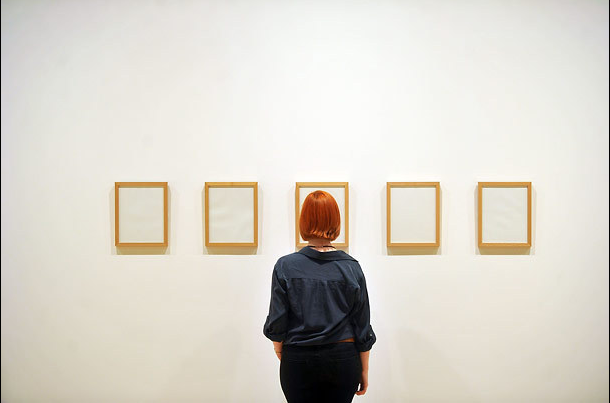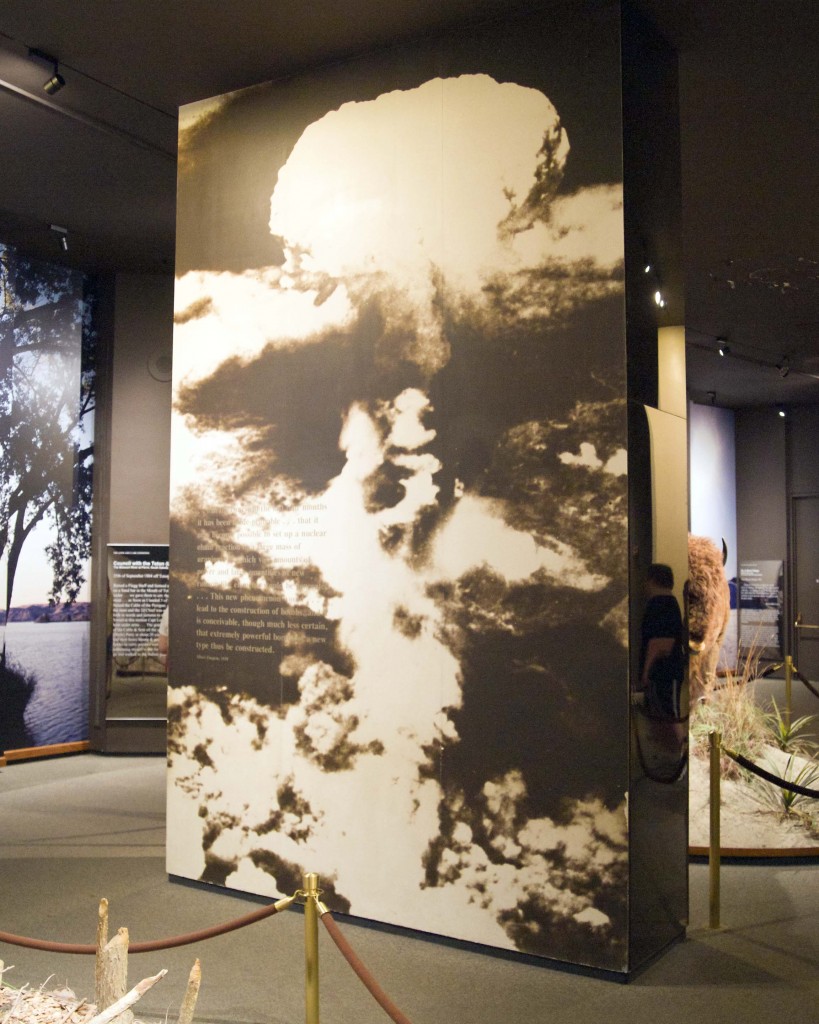The woman in the photograph above is looking at an art installation called “Magic Ink” on display as part of an exhibit at London’s Hayward Gallery titled “Invisible Art—Art About the Unseen, 1957-2012.” Interesting in its own right as perhaps a comment on the in/visibility of symmetry, what drew my attention to it is rather something of a personal conceit as it reminded me of my first visit to the Tate Gallery in 1986.
The Tate is one of the most popular modern art museums in the world (measured by annual attendance figures) and when I was there it was featuring a series of exhibits on various forms of neo-minimalist, pop art. Everywhere one looked, the canvases, sculptures, and installations drew upon the ordinary objects of everyday life to pose radical challenges to our ways of seeing. Leaving one exhibit hall and making my way to another I came across an empty hallway that had an empty, 4 X 6 foot gold embroidered frame hanging on a plain white wall.
I was entranced and intrigued. After looking at paintings of soup cans, and sculptures made from everyday trash, I was delighted by the museum’s playfulness as it sought to remind us of the conceptual importance of the frame for defining the artistic event. For here we had an institutionally plain white wall that otherwise would have been totally invisible made profoundly significant by the simple convention of locating it within and around a frame. Indeed, I began to wonder if the frame framed the wall or if the wall framed the frame. And more, I began to think about how the museum itself became something of a frame for all that was within its walls, lending artistic credibility to things that otherwise might not be seen as art at all, but rather as the simple, quotidian objects or random junk that it was.
There was a bench nearby and I sat on it for 10-15 minutes pondering the artistic genius of the “empty” frame and how it signified. Just as I was about to get up to leave two custodians came along and unceremoniously removed the 4 X 6 foot frame from the wall, dumped it on a dirty and rusting dolly, and hauled it away. I was crushed, my ego altogether deflated as i recalled the words often attributed to Freud, that “sometimes a cigar is just a cigar.” But the more I thought about it, that wasn’t quite right either, for here what had duped me into seeing the frame as a marker of invisibility was not just my own intellectual arrogance (though we should not discount that altogether) but the very fact that I was in a modern art museum featuring precisely the kind of art I thought I was seeing. Had I encountered this empty frame in a shopping mall or in a friend’s house I would in all likelihood have seen it for nothing more than an empty frame—if I had registered seen it at all. And so, in its own way, the lesson of the moment was all the more significant, for it helped me to recognize the complexity of framing: both how we bring our own frames to the world all of the time, and more, that where we see something is every bit as important as what we are actually looking at; indeed, it may well be that the where is even more important than the what in terms of “framing” meaning.
The point is perhaps not all that profound for those of us who live in a world that relies upon an advanced visual literacy, but even then it is no less significant for that fact, and certainly it is something we need to be reminded of from time to time. For me, at any rate, the photograph above recalled the importance of the frame and the complexities of the ways in which it manages the tensions between the visible and the invisible, both what we see and what we choose not to see.
Photo Credit: Bethany Clarke/Getty Images


